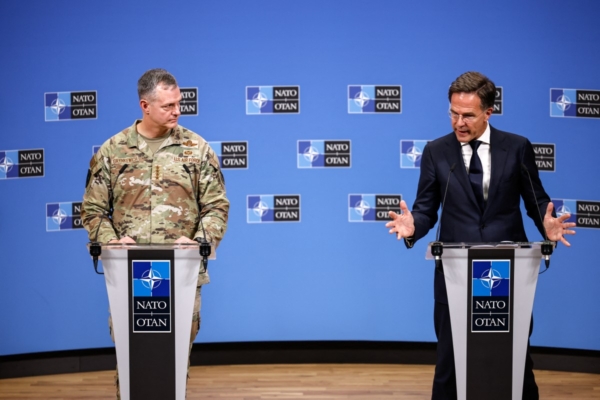On Friday, September 12, NATO Secretary General Mark Rutte announced the launch of a military operation called “Eastern Sentry” in response to Russian unmanned aerial vehicles invading Polish airspace earlier in the week. The operation aims to enhance defense on the eastern flank of Europe.
Rutte emphasized NATO’s determination to defend its territories during a press conference at the NATO headquarters in Brussels. He stated, “As NATO, we must demonstrate our resolve and capability to defend our territory, thus the ‘Eastern Sentry’ operation was born.”
The military operation is set to commence in the coming days and will mobilize military forces from NATO allies such as Denmark, France, the United Kingdom, Germany, and others.
From September 9 to September 10, nearly 20 Russian unmanned aerial vehicles infiltrated Polish airspace. With the assistance of Italy, Germany, and other NATO forces, Polish and Dutch fighter jets successfully repelled this act of aggression. On September 11, Poland’s Ministry of the Interior reported finding wreckage from 16 Russian UAVs.
This marked the first instance of Russian drones being shot down in NATO airspace.
Rutte mentioned that NATO is currently assessing the possible motives behind Russia’s incursion into NATO territories. This marks the first such action taken by NATO since Russia’s invasion of Ukraine in 2022. Regardless of intent, Rutte condemned Russia’s actions as “reckless and unacceptable.”
Russia claimed its military was targeting Ukraine at the time of the drone invasion and had no intention of attacking any targets in Poland. However, Poland rejects this explanation, labeling the intrusion as a deliberate attack.
Grynkewich highlighted that the “Eastern Sentry” operation aims to bolster defense along NATO’s entire eastern flank, stretching from Baltic States in the north to Romania and Bulgaria in the south.
He reassured Polish and NATO citizens, stating, “Our swift response earlier this week and the important statements made today should instill confidence.”
NATO has deployed significant forces in Eastern Europe, including thousands of soldiers. The exact number of troops participating in the new operation has not been disclosed, but NATO’s statement detailed the deployment of additional military assets, such as two F-16 fighter jets and a frigate from Denmark, three Rafale fighter jets from France, and four Eurofighter jets from Germany.
Grynkewich emphasized that the new operation aims to adopt a more flexible approach to defend the entire eastern flank, rather than solely deploying static forces to specific areas. He added, “In the east, we will continuously adjust and change our posture to keep adversaries off balance and respond to specific threats as they emerge.”
On Friday, the Russian Ministry of Defense announced the commencement of a five-day joint strategic exercise between Russian and Belarusian armed forces named “Zapad-2025” (West-2025). According to Belarus, most of the exercise activities will take place near a city east of Minsk before Tuesday of next week. The Russian military stated that some “practical” exercises will also be conducted within Russian territory, as well as in the Barents Sea and Baltic Sea regions.

